ProPeat
New fertiliser technologies are emerging for Australian turf managers as we spring into the upcoming growing season. Among them, one of the fertilisers changing the game in turf nutrition is peat-based fertiliser ProPEAT, featuring Carbon90Plus technology.
After over a decade in development, US-based company ProPEAT has created what they claim to be the most effective nutrient delivery method using a natural carrier. This fertiliser offers enhanced nutrient delivery, reduced environmental impact and promising results in field trials.
Unravelling the Peat-Based Advantage
Unlike more traditional fertilisers that flood plants with nutrients upon wetting, peat-bound nutrients in the Carbon90Plus technology release gradually, precisely when plants need them. It does this by binding nutrients to the natural carbon available in peat moss. This approach fosters steady plant growth, leading to healthier turf that requires less frequent mowing and less thatch build up.
The Power of Homogenous, Granular Prills
ProPEAT fertilisers employ homogenous, granular prills, each containing a precise mix of nutrients that break down evenly in the soil. Bound by carbon, these nutrients provide a longer lasting, more natural fertiliser, contributing to soil building and improved soil quality over time.
Adaptable to Different Climates
The unique characteristics of Carbon90Plus technology makes peat-based fertilisers uniquely beneficial in both wet and dry climates. By reducing leaching and minimising irrigation needs, ProPEAT fertilisers demonstrate reliability across various environmental conditions to promote water-use efficiency.
How do peat-based fertilisers stack up against other treatments?
Field trials on perennial ryegrass comparing ProPEAT peat-based fertilisers with other fertiliser treatments, including standard urea, sulfur-coated urea, polyon and the untreated control, have shown impressive results. Turf plots treated with ProPEAT fertilisers exhibited rapid improvements in visual colour and quality, surpassing all other treatments.
Throughout the trial period, turf plots receiving the ProPEAT treatment consistently displayed the darkest green colour and the best overall growth based on observations. The visual quality of the plots receiving the ProPEAT application also exhibited an improved quality over all other treatments throughout the duration of the study. Based on these trials, the steady and reliable nutrient-release characteristics of the ProPEAT Carbon90Plus technology could be an exciting option for turf managers seeking visually appealing and healthy turf.
Visual Colour Over 6-Week Trial Period
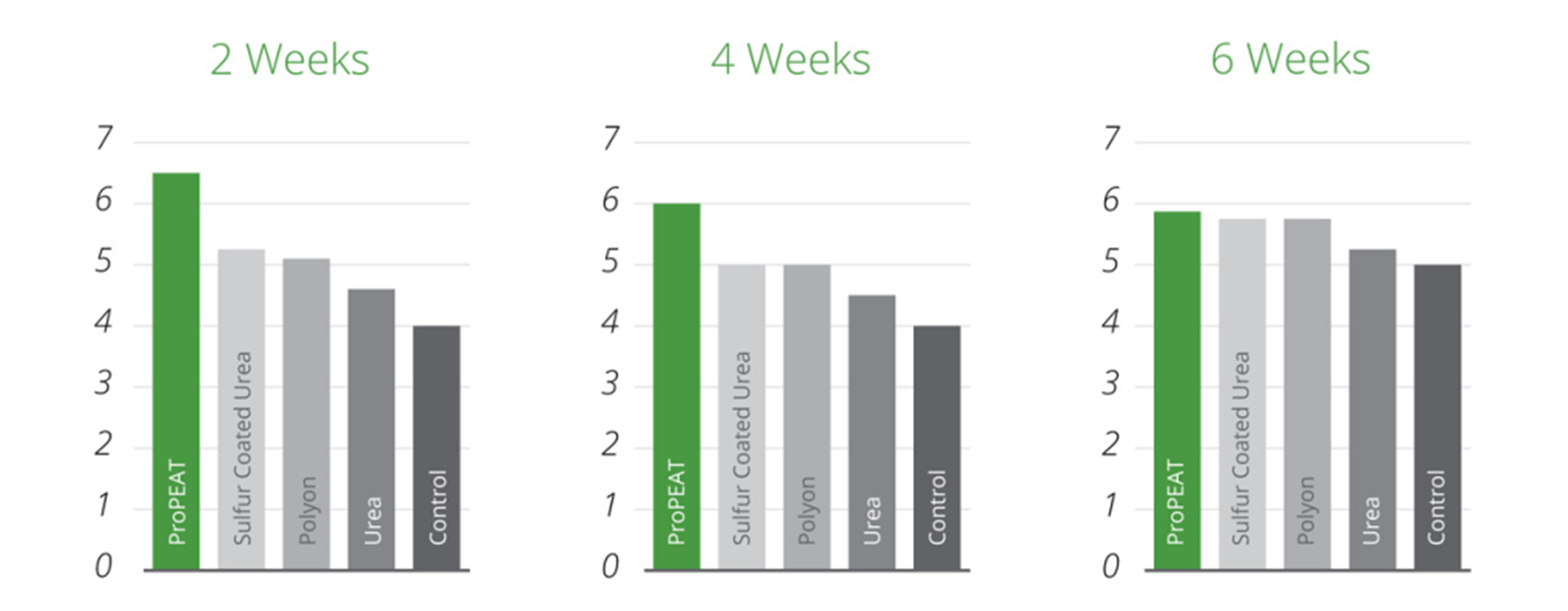
Visual Quality Over 6-Week Trial Period
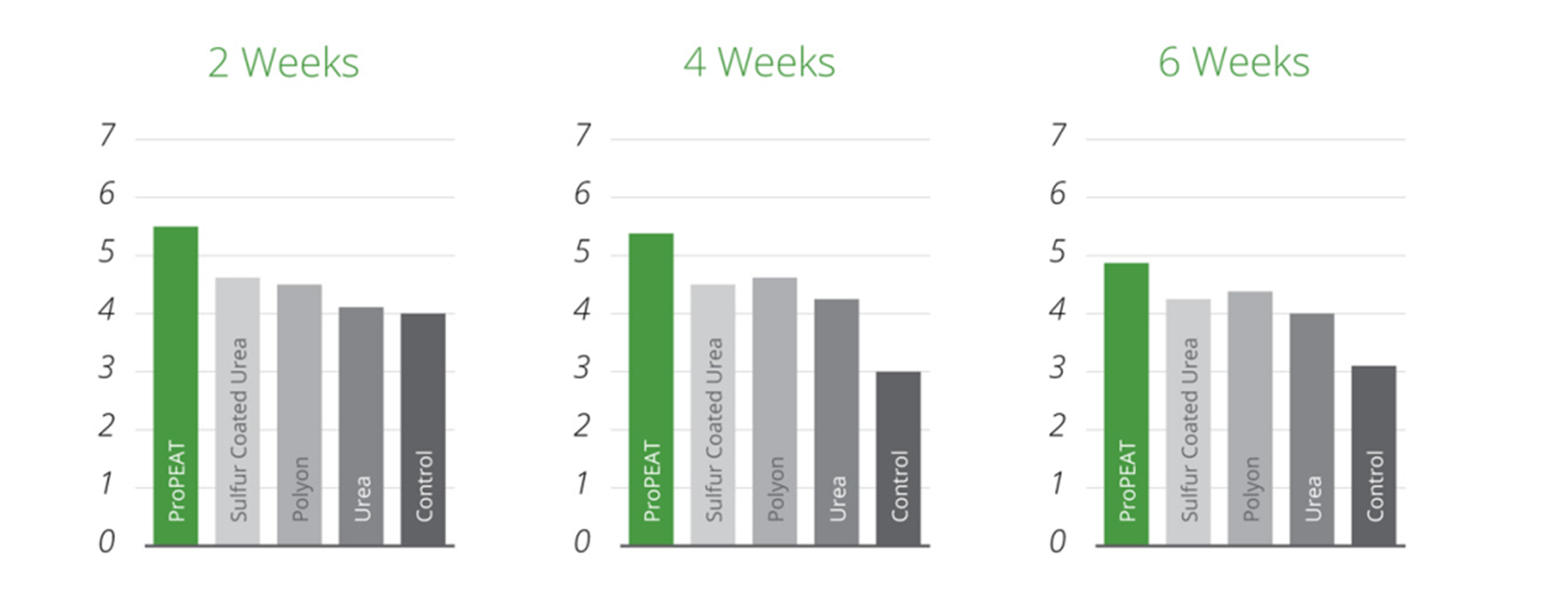
The below aerial photograph shows the perennial ryegrass study area four weeks after the initiation of the ProPeat trial. Note that all surrounding areas are unfertilised.
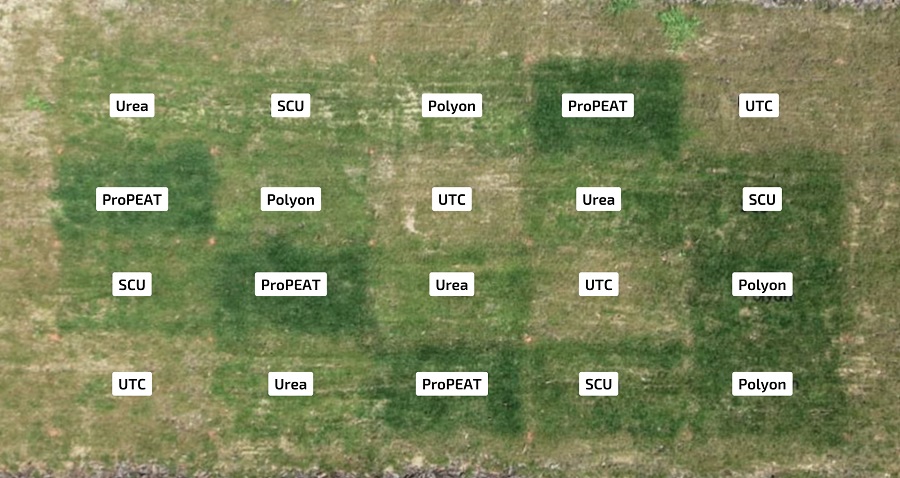
Supplementary studies further demonstrated that less ProPEAT fertiliser was required to produce the desired turf response when compared to traditional fertilisers. Dr Jason K. Kruse, PhD Associate Professor of Turf Grass Science at the University of Florida noted that: “Considering the ProPEAT weight for weight treatment was only applied at 272g of nitrogen 93sqm compared to the 907g of nitrogen 93sqm that was applied with all other treatments, it was able to produce a turf response that exhibited minimal differences between other products in this study.”
With turf management products and practices often under environmental scrutiny, peat moss can offer some additional environmental benefits including oxygen production, reduction in air pollution, improvements in water quality through reduced erosion and slowing down surface water run-off.
Peat is also known for its high Cation Exchange Capacity (CEC) which means it has a high capacity to hold and exchange mineral nutrients. ProPEAT provides a range of humic and fulvic acids which increase the CEC value (0.5% humic acid is available at the time of application and is released over time as the peat breaks down).
Is peat-based fertiliser right for my turf?
Given the unique qualities of peat-based fertilisers, they can be a highly beneficial option for your turf, especially with a hot and dry summer to be expected this year. Here’s why you might consider a peat-based fertiliser as either a principal component in growing media, or use as a soil amendment:
- Enhanced Water Retention: Peat moss, a key component of peat-based fertilisers can retain up to 20 times its weight in water. This ability helps improve soil structure, making it ideal for increasing water retention in light sandy soils and reducing nutrient leaching.
- Improved Soil Aeration: Peat aids in aerating and loosening heavy clay soils, enhancing drainage and porosity. This improvement allows turf roots to breathe, grow and efficient absorb nutrients, fostering healthy turf growth.
- Soil Buffering Capacity: Peat-based fertilisers contribute to enhanced soil buffering capacity, making them tolerant to pH variations. This capability ensures a more stable and favourable soil environment for optimal turf growth.
- Cation Exchange Capacity (CEC): Peat improves CEC, which aids in retaining essential minerals and gradually releasing them over time. This prevents the leaching of valuable fertiliser nutrients, ensuring their availability to the turfgrass plant for longer periods.
- Natural and Free of Contaminants: Peat is a natural resource free from weeds and pollutants, making it a reliable and clean choice for your course.
- Enriched with Organic Matter: Peat-based fertilisers add valuable organic matter to the soil, along with numerous beneficial microorganisms. This enriches the soil’s health and fertility, promoting overall turf vitality.
The rise of new fertiliser technologies in turf management presents exciting opportunities for improving both the environmental sustainability and aesthetic appeal of golf courses. Peat-based fertilisers including ProPEAT with Carbon90Plus technology have demonstrated their worth in field trials, outperforming conventional nutrient alternatives, and leading to healthy, visually remarkable turf. As we embrace these advancements, turf managers can look forward to a greener future for their surfaces.
- ProPeat
ProPeat Carbon 17-0-3 Greensgrade
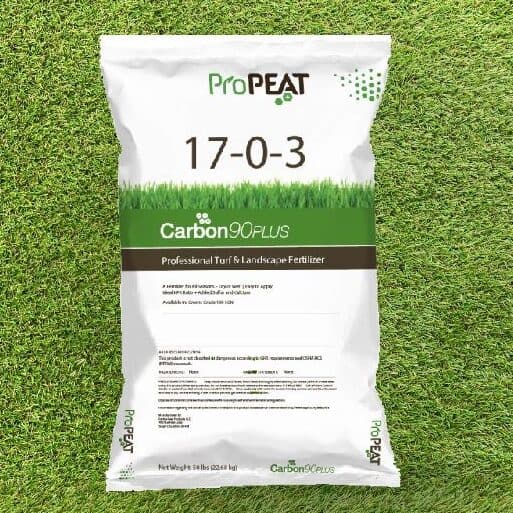
ProPEAT Carbon 17-0-3 Greensgrade fertiliser is a premium natural carbon-based, extended-release fertiliser.
Analysis: 17% N, 0% P, 3% K and 17% S Plus Humic AcidPrice$116.30 inc. GSTDetails - ProPeat
ProPeat Carbon 7-1-11 Greensgrade
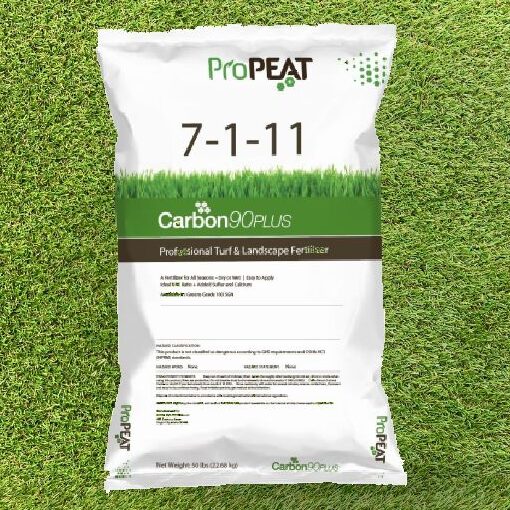
ProPEAT Carbon 7-1-11 Greensgrade fertiliser is a premium natural carbon-based, extended-release fertiliser.
Analysis: 7% N, 1% P, 11% K, 14% S, 1% Ca, 0.9% Mg, 2% Fe, 0.02% B, 0.05% Mn, 0.05% Cu and 0.05% ZnPrice$116.30 inc. GSTDetails
